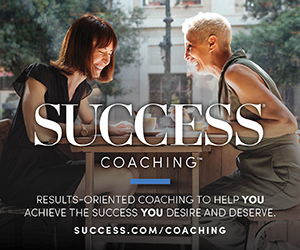Renowned organizational psychologist Adam Grant said it best: “Zoom fatigue is not burnout. It’s boreout.” You’d think after almost four years since the pandemic began and we were all thrust onto one mindless Zoom after another, that we’d have figured out how to prevent Zoom fatigue.
New York Times bestselling author of books Hidden Potential and Think Again, Grant cites a recent study from the American Psychological Association that describes virtual meetings as “more mentally taxing” than other types. These meetings are leading to “Zoom fatigue,” in which participants are too exhausted to engage properly. The researchers divide the finding into two subcategories:
- Active fatigue—This is the feeling that results after exertion, when you finally turn off the camera and take a sigh, for example.
- Passive fatigue—This is drowsiness or sleepiness, which might happen from listening to one too many Zoom calls in which you aren’t really an active participant.
We’ve all been there, on both counts. The researchers conclude that participants tend to experience passive fatigue more often during virtual meetings, while in face-to-face meetings participants didn’t experience either. The researchers add that passive fatigue can have a detrimental influence on cognitive performance, meaning that virtual meetings might literally be hurting progress rather than helping.
How to combat Zoom fatigue
So, what is a remote worker to do? Here are a few tips on combating Zoom fatigue, from those trying to put the spark back into virtual meetings, one innovation at a time.
Try some better tech
If you are still using the same setup you were when you began working remotely, it might be time to check in with yourself, and maybe your tech team. Are you optimizing technology to best engage in meetings?
David McQuarrie, chief commercial officer at HP, says keeping multiple speakers in the frame or showing various participants while whiteboarding at the same time can, “create an experience where everyone has equal opportunity to engage.” He reminds users to also enable stronger audio and video quality, removing distracting sounds for better focus.

McQuarrie also points to the fact that, despite these challenges, according to HP’s research, 77% of employees prefer a hybrid model. “And even with this flexibility, hybrid workers still face challenges, as less than a quarter say they are thriving in their current work environment. One key pain point employees struggle with is feeling included in meetings, whether in the office or joining virtually from another location,” he adds.
So, give your technology a bit of a brush-up to ensure you are optimizing your opportunity to engage as much as possible and not just staring at the same speaker the whole time.
Swap small group check-ins for 1:1’s
Have you ever had coffee with a group of friends and couldn’t get a word in? Then you know that a one-on-one coffee date might be much more enjoyable. The same is true for Zoom. Amanda Cross, content marketing manager for Nectar in Forrest City, Arkansas, instituted a streamlined model she uses with her freelancers and clients.
“I work for a company that centers around helping employees feel more valued and appreciated at work. When I decided to run my meetings, I knew a large portion of that meeting should be about ensuring that my freelancer felt valued by myself and the company I worked for,” Cross says. It wasn’t immediate, but now she feels all her meetings are engaging.
In her monthly, 30-minute 1:1 meetings, she discusses:
- Positive impacts the team member is making, including data analytics
- Company-wide updates to mission and values, or survey results that might be relevant to that person specifically
- Briefings for upcoming projects, to “make sure we are on the same page,” she wrote on a LinkedIn post about her meeting style
“It’s a fantastic way to start the month and discuss content with someone who gets it. It’s also a great way to see another person’s perspective on what we are creating,” Cross says. “I mostly communicate asynchronously with my freelancer, but this meeting lets me get to know the person behind the content so that I can send her better/more informed briefs along the way.”
Challenge what you’ve been doing in the past
Change isn’t easy. But for Cross, it has been essential to improving and fine-tuning meetings to be the most beneficial for all parties. She shares a recent example:
“At one point, I changed how I displayed analytics. While… I was trying to uncover what articles created the most impact, I could tell that this was too much information for my freelancer. The next month, I moved to a different format where I gave the total page views and a look into our top five pieces. This was a much more productive use of time because it’s not her responsibility to consider what’s not working. That falls on my plate to glean learnings from.”
She hopes others will not be afraid to experiment, consider a new format and let the conversation go where it leads.
Combat Zoom fatigue by getting more hands-on
All that research above points to the necessity of feeling like you are at an in-person meeting. Valerie Bihet, founder of VIBE Agency, an event production company in Miami, decided to get creative to overcome the Zoom fatigue problem.
She made “reaction sticks”—a popsicle stick with printouts of various icons glued to the top—and sent them to each employee.
She used a heart icon to symbolize love for an idea; a lightbulb to indicate having a thought or idea to contribute to the meeting; and a winking face to show agreement.
Everyone has to use one stick at least once in the meetings, and whoever uses the lightbulb icon the most by the end of each quarter receives a prize.
Someone has to be in charge of the tally during each meeting, but it keeps team members incentivized to not only pay attention, but to contribute to the meeting.
Some of Bihet’s employees took it one step further, making additional reaction sticks with different emojis so they have a collection to choose from.
“I have found that gamification is always very key to keeping people engaged. We inherently want to win. We are competitive by nature. So when you can create a meeting agenda that allows a little competition, it encourages those invited to not only attend, but be excited to attend to see if they can win,” Bihet says.
More Zoom fatigue remedies
Bihet’s Zoom fatigue remedies don’t stop there. Here’s what else she recommends when your team is struggling with virtual meeting fatigue:
- Always start with an interactive icebreaker. Keep it short (15 minutes or so) and include some questions to get people started.
- Visual aids are key to avoiding Zoom fatigue. Slides, videos and photo sharing are all ways to break up the monotony. No one wants to have someone talking at them for the entire meeting.
- Use the polls and surveys feature. This is the fastest way to reengage attention because the feature pops up on attendees’ screens. Plus, our curious nature means we’ll want to see the results. To do that on Zoom, attendees have to vote or reply.
- Theme the meeting. If you are meeting for more than one hour or the meeting is a key monthly/quarterly session, add a theme to the agenda. Create a digital background and send it to all participants. It will pique their interest and create a unifying element.
- Include moments for movement. A general rule of thumb is to include a physical movement break every 90 minutes if the meeting is all day or multiple days.
So, choose an idea and surprise your staff with more engaging elements and features during the next meeting. Or better yet, make sure that meeting couldn’t have been an email.
Photo by wichayada suwanachun/Shutterstock.com



